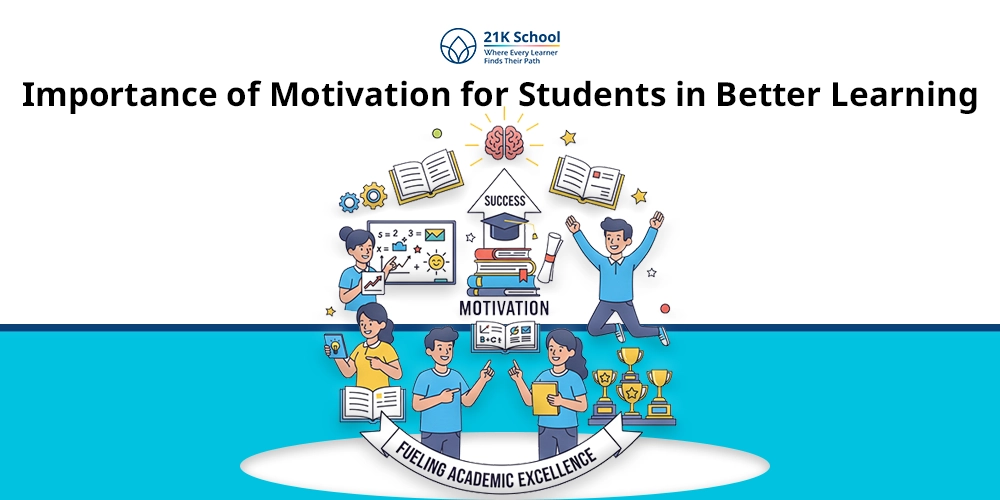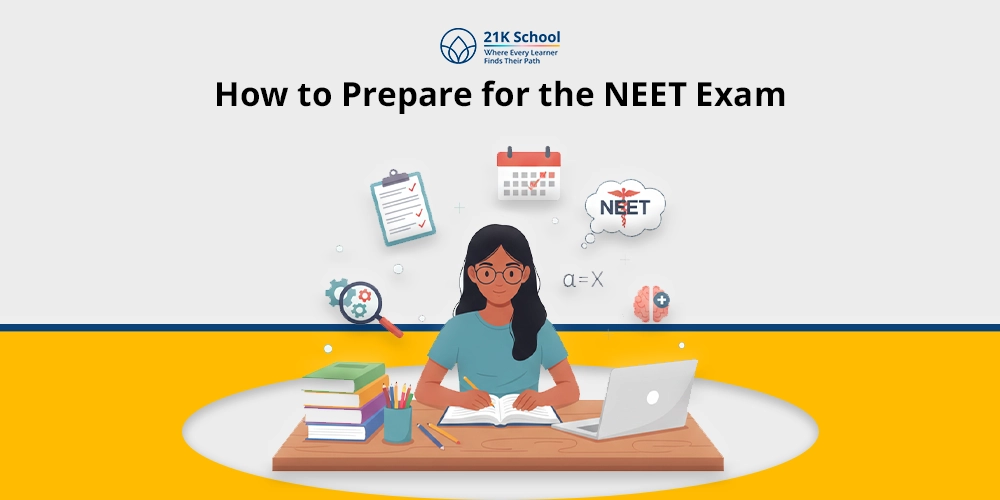
Learning new things can be tough at times, especially sitting in a classroom. Students may feel overwhelmed causing them to lose interest and become disengaged.
This is why K12 educational institutes are now adopting tech-driven learning strategies, especially online schools like 21K School.
This blog will discuss how technology can be leveraged to create an engaging and interactive learning environment.
Contents
What is Interactive Online Teaching?
Interactive online teaching is when technology and digital tools are used to promote active participation and engagement in a classroom.
In a traditional set-up, the learning process involves a one-way communication where the teacher delivers the daily lessons. However in the case of interactive online teaching, students actively collaborate, communicate, and explore concepts.
This approach helps students to engage themselves in the learning process thus fostering a deeper understanding and retention of the concepts.
Interactive online teaching involves utilizing multimedia tools such as video simulation and quizzes alongside a variety of digital platforms. These digital platforms include online forums, virtual classrooms, video conferencing software, educational apps and more.
Overall, interactive learning helps to create a dynamic and holistic learning environment that promotes active participation, critical thinking, and meaningful learning outcomes, despite the physical separation between the teacher and students.
How does Technology Help to Promote Interactive Learning?
53% of the teachers surveyed by Smooth wall said that technologies make their classrooms more vibrant and fun. With the integration of technology, lessons can be made more stimulating and dynamic. Here’s how:
- Engagement: Technology like virtual reality or gamification can capture the attention of students hence keeping them excited about learning.
- Collaboration: Online learning platforms create opportunities for students to work together with their friends, thereby fostering team spirit and communication abilities.
- Personalization: Adaptive learning technologies have the ability to adjust instruction to accommodate the needs of each student individually, thereby offering bespoke experiences for learning that suit the pace and style of each student.
- Feedback: Technology provides instant feedback that enables learners to keep tabs with their progress live, pinpoint areas that need improvement and consequently modify their study techniques.
- Accessibility: Technology can enhance accessibility of teaching materials to learners with different requirements like handicaps or people who are polyglots by availing features like text-to-speech, translating tools and alternative formats.
- Creativity: Students can utilize digital tools in order to express feelings, ideas or even complex issues in ways considered creative including multimedia presentation, digital storytelling and interactive projects.
Top 4 Emerging Trends in Education Technology in 2024
In 2024, the technology in education continues to evolve, making online teaching exciting and interactive. Here, we have a list of the top five emerging technology trends of 2024:
1. Virtual Reality (VR) and Augmented Reality (AR)
Virtual Reality (VR) and Augmented Reality ( AR) are two incredible innovations that have transformed the way a student learns by taking them in a complete virtual environment.
With the help of VR headsets, students can explore the world like they can go into historical landmarks, dive into the depths of oceans, and also dissect virtual organisms.
And for all these, they are not bound to go anywhere, just sitting on their couch at their home, they can explore what they want. On the other hand, AR helps to overlay online content onto the real world, enhancing traditional textbooks with interesting elements.
Undoubtedly, these advanced technologies have made the learning way engaging and fun to learn.
2. Artificial Intelligence (AI) Personalization
The sensation of the new era, Artificial Intelligence (AI) is another gift of technology that has revolutionized education through personalized learning experiences.
The algorithms of AI analyze the students’ learning patterns and what are their preferences so that they can give information accordingly.
Adaptive learning platforms align the pace and the content of lessons with the individual needs to ensure that every student receives the same support that they need. Further, AI-based tutors provide instant feedback and assistance making learning easier and interesting.
3. Learning through Games
Gamification combines game elements into educational activities that grab the attention of students and make them engaged throughout the learning process.
By introducing rewards, challenges, and a progression system, educators can easily make the students understand even the tough concepts.
Educational games foster active participation, critical thinking, and problem-solving skills and also promote collaborative learning environments.
Be it a puzzle of maths or competing educational quizzes, gamification has made everything effective yet enjoyable.
4. Mobile Learning
Mobile devices are the one where every technology that we discussed begins. It is the best medium that offers you the feature to access your educational resources at any time and from anywhere.
Mobile learning platforms give bite-sized lessons, engaging quizzes, and multimedia content directly to students’ smartphones.
The flexibility that it offers makes it easy for learners to access it in their spare time, maximizing learning opportunities all the time. Learning has never been this easy before.
Conclusion
In conclusion, technology has completely transformed the landscape of education, mainly when it comes to online learning.
From promoting an engaging and interactive learning environment to personalizing instruction and embracing the rising trends like AI, VR, AR, mobile learning, etc, the tomorrow of education is certainly shining and promising.
With the help of technological advancement, students can step into a journey of growth and discovery like never before.


